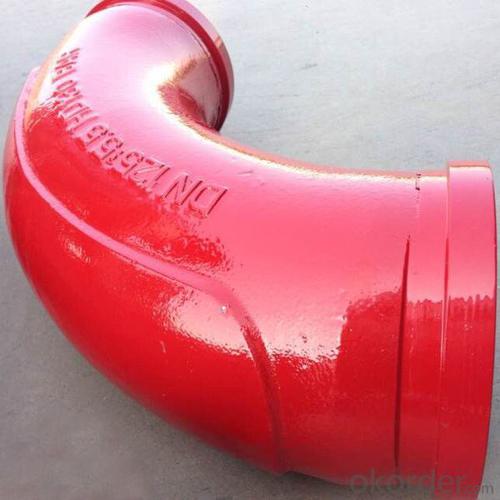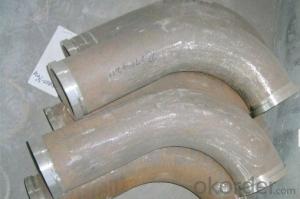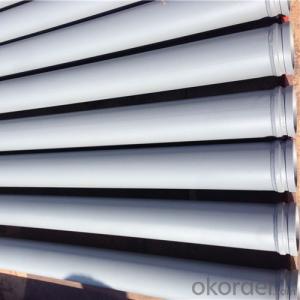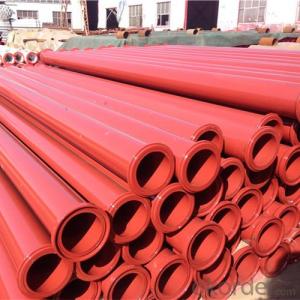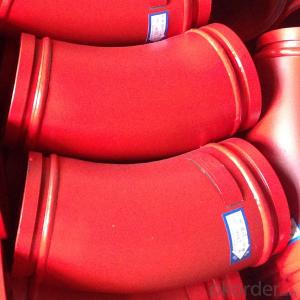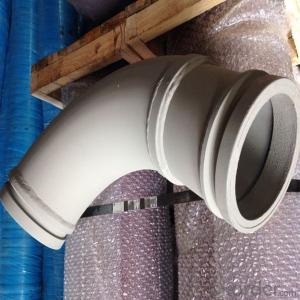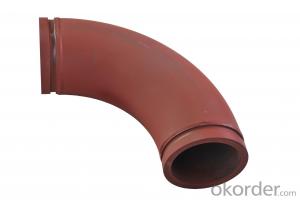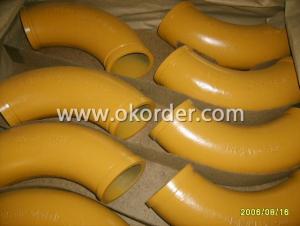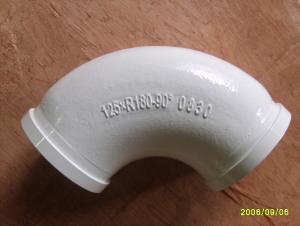Concrete Pumps Spare Parts Elbow Double Neck 90DEG R275
- Loading Port:
- Tianjin
- Payment Terms:
- TT OR LC
- Min Order Qty:
- 50 pc
- Supply Capability:
- 100000 pc/month
OKorder Service Pledge
OKorder Financial Service
You Might Also Like
Product Description:
The Concrete Pumps Spare Parts Elbow 90DEG R275 Double Neck normally made by special MN13-4, to make sure the quanlity of elbows according to customer’s requests we usually keep the content of MN strictly over 15%, it will have a longer life as well, package will be in plywood box or cartons and put into container. 60 pcs elbows be puted into one plywood box.
Scope of Application of the Goods
The Concrete Pumps Spare Parts Elbow 90DEG R275 Double Neck is a concrete pumps parts for combined use with other concrete parts in for concrete pumps and truck pumps. It can be widely used in the construction of various types of concrete structures like industrial and civil buildings, bridges, roads, and other types of infrastructure.
This seals can be used only on truck pumps, but not in any other operations.
Product Advantages:
OKorder's Concrete Pumps Spare Parts Elbow 90DEG R275 Double Neck Channels are durable, strong, and safety.
Main Product Features:
· Premium quality
· Prompt delivery & seaworthy packing (5-10 days)
Reliable performance
Easy to weld
High safety.
· Professional Service
· Competitive pricing
Measuring of wall thickness from the outside
Low purchase cost
Specifications:
Elbow 90DEG R275 Double Wall Layers at Backside
Capacity Life: 30,000 cbm
FAQ:
Q1: How long about delivery time Concrete Pumps Spare Parts Elbow 90DEG R275 Double Neck?
A1: Normally we keep the raw materials for old customers and sometime we also keep stock products to make sure delivery time in any emergency cases.
Q2: How do we guarantee the quality of our Concrete Pumps Spare Parts Elbow 90DEG R275 Double Neck?
A2: We have established an advanced quality management system which conducts strict quality tests at every step, from raw materials to the final product. At the same time, we provide extensive follow-up service assurances as required.
Q3: How soon can we receive the product after purchase?
A3: Within three days of placing an order, we will book the vessel for goods. The specific shipping date is dependent upon international and government factors, but is typically 7 to 30 workdays.
Q4: If we can produce some goods according to customers request?
A4: Yes, we can produce Elbow 90DEG R275 Double Neck according to the difference country situations to make it suitable to the market and customers. We have very professional technical team to make the design for porduction of seals.
Q5: How to make a quick resolution for after service?
A5: OKorder and our manufacture both have overseas branches all-around of world.
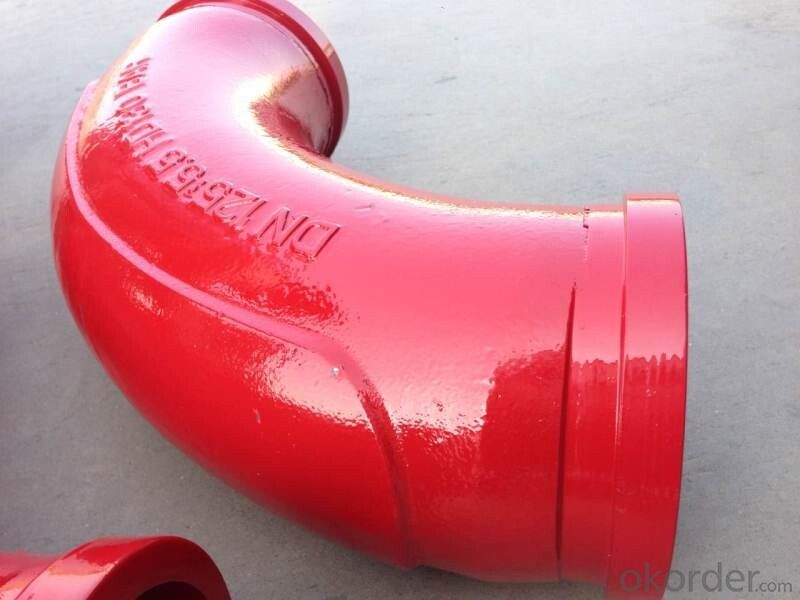
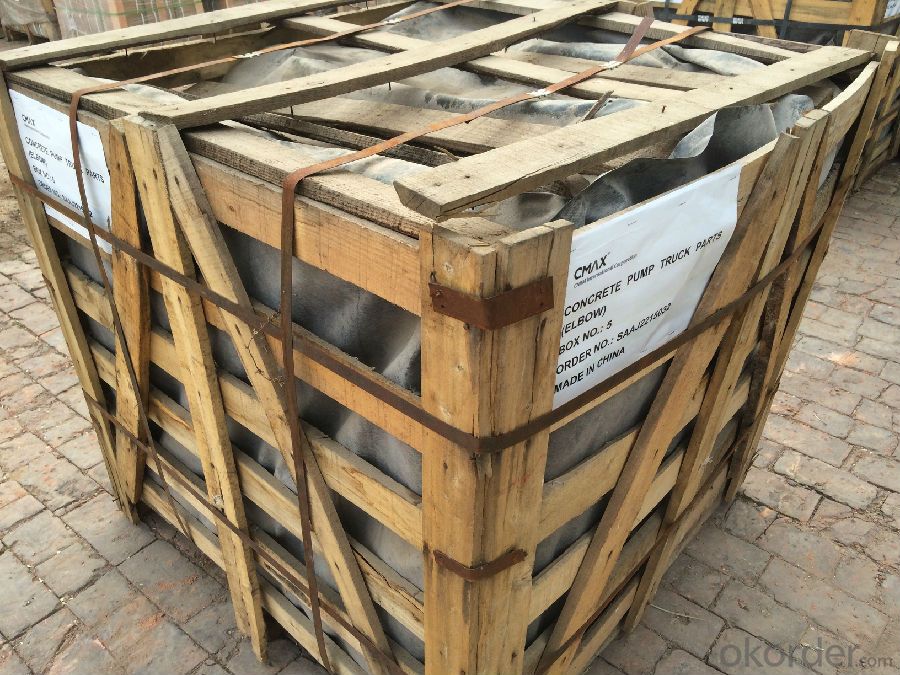
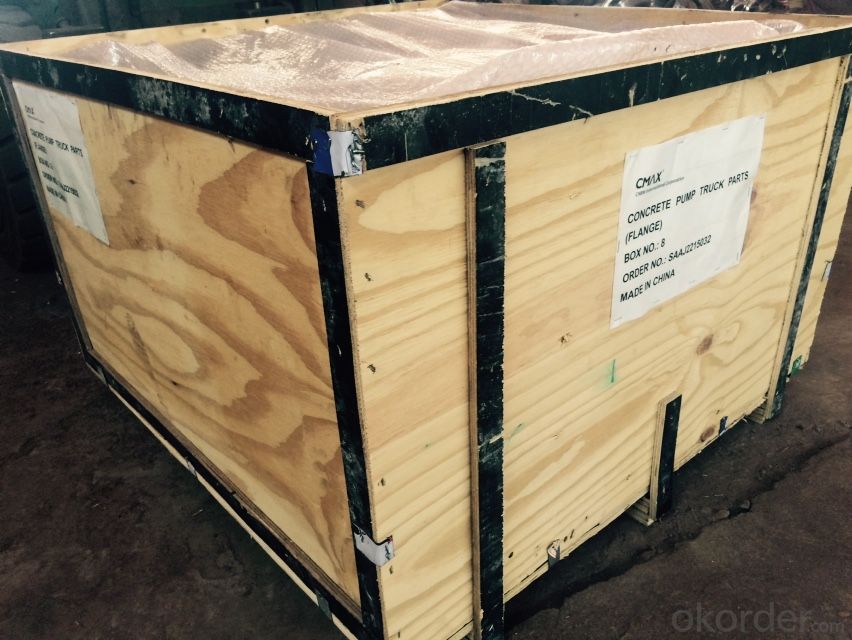
- Q: Are there any specific guidelines for the installation of wear plates or wear rings in concrete pump spare parts?
- Concrete pump spare parts, such as wear plates or wear rings, have specific guidelines for their installation. These guidelines guarantee proper installation and optimal equipment performance. Here are some essential guidelines to consider: 1. Prior to installation, thoroughly examine the wear plates or wear rings for any damage or defects. Replace any damaged or worn-out parts to ensure efficient operation. 2. Ensure that the concrete pump and all related components are clean and clear of debris or contaminants. Doing so will prevent premature wear and prolong the lifespan of the wear plates or wear rings. 3. Before installation, apply a suitable lubricant to the wear plates or wear rings. This will minimize friction and extend the components' service life. 4. Proper alignment is crucial for the effective functioning of wear plates or wear rings. Make sure the plates or rings are correctly aligned and securely fixed in place. Misalignment can cause premature wear and equipment damage. 5. Use the recommended torque specifications to tighten the bolts or fasteners that secure the wear plates or wear rings. Improper tightening can result in equipment malfunction or damage. 6. Implement a regular maintenance schedule to inspect and replace worn-out wear plates or wear rings. Regular maintenance will help detect and address any issues before they lead to major breakdowns or costly repairs. It is important to consult the manufacturer's guidelines and adhere to their specific instructions for the installation of wear plates or wear rings in concrete pump spare parts. Following these guidelines will ensure the equipment's optimal performance and longevity.
- Q: How often should hopper agitator shaft seals be replaced in a concrete pump?
- The replacement frequency of hopper agitator shaft seals in a concrete pump relies on various factors such as pump type, usage amount, operating conditions, and maintenance practices implemented. In general, it is recommended to regularly inspect hopper agitator shaft seals for any signs of wear, damage, or leakage. If any problems are detected, they should be promptly addressed to prevent further harm. However, as a rough estimate, these seals may require replacement every 6 to 12 months or after approximately 500 to 1,000 operating hours. It is important to understand that this is merely an approximation, and the actual replacement frequency may differ. The quality of the seals, intensity of usage, and operating conditions of the pump can significantly impact the lifespan of the seals. Furthermore, regular maintenance and appropriate lubrication can aid in extending the durability of the seals. To ensure optimal performance and prevent potential issues, it is advisable to consult the manufacturer's recommendations and guidelines specific to the concrete pump model being utilized. Adhering to their guidelines and conducting regular inspections of the seals will aid in determining the appropriate replacement interval for the hopper agitator shaft seals and guarantee efficient pump operation.
- Q: What are the functions of concrete pump truck?
- Concrete pump truck is mainly used in building, bridge and tunnel construction. Currently mainly divided into gate valve, concrete pump and S valve concrete pump.
- Q: How do I properly maintain and replace hydraulic valves in concrete pump spare parts?
- Proper maintenance and replacement of hydraulic valves in concrete pump spare parts is essential to ensure the smooth operation and longevity of the equipment. Here are some steps to follow: 1. Regular Inspection: Regularly inspect the hydraulic valves for any signs of wear, damage, or leakage. Look for cracks, corrosion, or any other visible defects. It is important to catch any issues early on to prevent further damage. 2. Cleanliness: Keep the hydraulic valves clean to prevent dirt, debris, or contaminants from entering the system. Use a suitable cleaning agent and a lint-free cloth to wipe the valves and remove any buildup. 3. Lubrication: Proper lubrication is crucial for the smooth operation of hydraulic valves. Refer to the manufacturer's guidelines to determine the appropriate lubricant and the recommended schedule for lubrication. Apply the lubricant as per the instructions provided. 4. Replacement: If a hydraulic valve is damaged or worn out beyond repair, it is important to replace it promptly. Identify the correct replacement valve by referring to the equipment's manual or consulting with the manufacturer. Ensure that the replacement valve matches the specifications required for your concrete pump. 5. Professional Assistance: While some maintenance tasks can be done by operators, it is advisable to seek professional assistance for complex maintenance and replacement procedures. Professional technicians have the expertise and knowledge to handle hydraulic valves safely and effectively. 6. Safety Precautions: Always adhere to proper safety protocols when working with hydraulic valves. Remove any sources of pressure and fully depressurize the system before attempting any maintenance or replacement. Wear appropriate personal protective equipment, such as gloves and safety goggles, to protect yourself from potential hazards. Overall, regular maintenance, timely replacement, and adherence to safety guidelines are essential for properly maintaining and replacing hydraulic valves in concrete pump spare parts. Following these steps will help ensure the reliable and efficient operation of your equipment.
- Q: How can I extend the lifespan of my concrete pump spare parts?
- To extend the lifespan of your concrete pump spare parts, there are several key steps you can take: 1. Regular maintenance: Implement a comprehensive maintenance schedule for your concrete pump, including the spare parts. This should include regular inspections, cleaning, and lubrication of the parts. By identifying and addressing any issues early on, you can prevent further damage and extend the lifespan of the parts. 2. Use high-quality spare parts: Invest in high-quality spare parts from reputable manufacturers. Cheaper alternatives may save you money initially, but they tend to have shorter lifespans and may require frequent replacements. Opting for quality parts will ensure durability and longevity. 3. Proper storage: Store your spare parts in a clean, dry, and well-organized environment. Exposure to moisture, extreme temperatures, and dirt can deteriorate the parts over time. Consider using protective covers or cases to shield the parts from dust and other contaminants. 4. Train operators: Proper operation of the concrete pump is crucial to preventing unnecessary wear and tear on the spare parts. Ensure that your operators are well-trained and follow the manufacturer's guidelines for usage and maintenance. Discourage any misuse or improper handling of the equipment, as this can lead to premature wear of the spare parts. 5. Regular cleaning: Keep your concrete pump clean by regularly removing any concrete buildup. The accumulation of hardened concrete can cause additional strain on the spare parts and lead to premature failure. Use appropriate cleaning methods and tools to ensure thorough removal without causing damage to the parts. 6. Timely repairs: Address any issues or damage to the spare parts as soon as they are identified. Ignoring or delaying repairs can worsen the problem and potentially cause damage to other components. Regularly inspect the spare parts for signs of wear, such as cracks, leaks, or excessive vibration, and promptly address any concerns. 7. Monitor usage and performance: Keep track of the usage and performance of your concrete pump and spare parts. Regularly monitor the wear and tear of the parts and the overall performance of the pump. Analyze any patterns or trends that may indicate potential problems and take corrective actions to prevent further damage. By following these steps, you can significantly extend the lifespan of your concrete pump spare parts, ensuring optimal performance and reducing the need for frequent replacements.
- Q: What are the signs of a malfunctioning concrete pump outrigger?
- There are multiple indicators that point towards a malfunctioning concrete pump outrigger. 1. An uneven or unstable platform may suggest that the outrigger is not functioning properly. This can be observed when the pump is not level or when the platform exhibits excessive movement or shaking. 2. The presence of hydraulic fluid leaks in the outrigger's hydraulic system is a telltale sign of malfunction. If you notice puddles or stains on the ground caused by hydraulic fluid, it signifies a problem. 3. If the outrigger is slow to extend or retract, or if it does not respond to the controls, it indicates a malfunction. This can jeopardize the stability of the pump and should be taken seriously. 4. Unusual noises emanating from the outrigger, such as grinding, whining, or knocking sounds, can be indicative of mechanical issues or loose components. Ignoring these noises may lead to underlying problems that require attention. 5. It is crucial to visually inspect the outrigger for any visible damage, such as bent or cracked components, loose bolts, or missing parts. These physical signs of damage can impair the functionality and stability of the outrigger. Regular inspection and maintenance of the concrete pump outrigger are essential for ensuring safe and efficient operation. If any of these signs are present, it is advisable to cease using the pump and have it inspected and repaired by a qualified professional to prevent further damage or accidents.
- Q: What are the different types of concrete pump hopper agitator motors?
- There are generally two types of concrete pump hopper agitator motors: electric motors and hydraulic motors. Electric motors are powered by electricity and are commonly used in smaller and portable concrete pumps. Hydraulic motors, on the other hand, are driven by hydraulic power generated by the concrete pump itself and are typically used in larger and stationary concrete pumps.
- Q: How much do concrete pump spare parts typically cost?
- The cost of concrete pump spare parts can vary significantly depending on the specific part needed, its brand, quality, and availability. It is recommended to contact suppliers or manufacturers for accurate and up-to-date pricing information.
- Q: Can I get spare parts for concrete pump hydraulic systems?
- Yes, spare parts for concrete pump hydraulic systems are typically available. You can contact the manufacturer or authorized dealers to inquire about the specific spare parts you need for your concrete pump hydraulic system.
- Q: How often should concrete pump remote control batteries be replaced?
- The replacement of concrete pump remote control batteries relies on several factors, including frequency of usage, battery quality, and environmental conditions. However, as a general rule, it is advisable to change the batteries every 6 to 12 months. This guarantees optimal functioning of the remote control and prevents unforeseen battery failures during crucial operations. Additionally, it is crucial to periodically assess battery performance and perform maintenance checks to ensure proper functionality.
Send your message to us
Concrete Pumps Spare Parts Elbow Double Neck 90DEG R275
- Loading Port:
- Tianjin
- Payment Terms:
- TT OR LC
- Min Order Qty:
- 50 pc
- Supply Capability:
- 100000 pc/month
OKorder Service Pledge
OKorder Financial Service
Similar products
Hot products
Hot Searches
Related keywords



